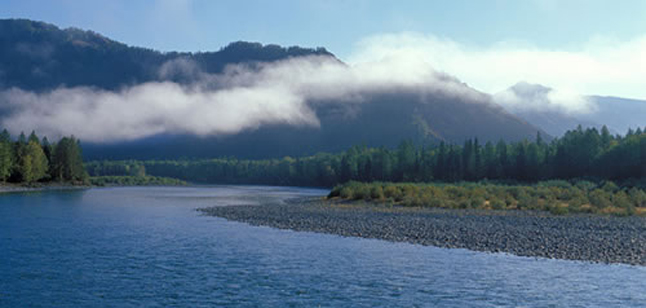Natural Resources
Contact
Russian StudiesHumanities Building, Room 209 651-696-6374
651-696-6428 (fax)
davism@macalester.edu
facebook instagram blogspot

Russia occupies more land on the planet than any other single nation. What Russia and its citizens choose to do with that land can have a major impact on the rest of the world.
Natural resources
- Russia owns about 25 percent of the world’s fresh water
- 70 percet of Russia is forested, accounting for 22 percent of the world’s forests
- Russia absorbs 15 percent of all the carbon dioxide in the world. The region is second only to the Amazon basin in the amount of carbon dioxide that it absorbs
- Russia contains the world’s largest oil and natural gas reserves. 20 percent of the world’s oil reserves are in Russia
- Russia also contains the second largest coal reserves, and a third of all tin and iron ore reserves, 40 percent of all platinum group materials, and a third of all nickel reserves
Sources: Paul E. Richardson, Russian Life (Dec. 2003), and Igor Shpilenok

Flora and Fauna
Russia has several soil and vegetation zones, each with its characteristic flora and fauna. From north to south, these zones are:
- Arctic desert – This is the northernmost region, which includes the Arctic islands and the seacoast of the Taymyr Peninsula. There is very little plant cover — only mosses and lichens. Sea birds and sea mammals (seals, walrus) are the most common creatures found here
- Tundra – This region extends along the extreme northern part of Asia, and is divided into arctic, moss-lichen, and shrubby tundra subzones. In the thin layer of acidic soil, only dwarf birches, willows, lichens, and mosses grow. Fauna in this region include the arctic fox, reindeer, white hare, lemming, and ptarmigan
- Taiga – The taiga is a large forest zone to the south of the tundra, and covers half of the country. The northern areas of this zone are a mixture of tundra landscape and sparse growth of spruce and deciduous trees such as birches. Further south, the taiga is mostly spruce, pine, fir, cedar, and some deciduous trees. Within the southern half of the taiga, on the Great Russian Plain, there are subzones of mixed and broadleaf forests. Wildlife in the taiga include moose, Russian bear, reindeer, lynx, sable, squirrel, capercaillie, hazel-grouse, owl, and woodpecker. In the broadleaf woods are European wild boar, deer, roe deer, red deer, mink, and marten
- Forest-steppe – This is a narrow band between the Great Russian plain and the West Siberian low country. Steppes with various grasses alternate with small tracts of oak, birch, and aspen. Still farther south, the forest-steppe changes to a region of varied grasses and small plants. The black and chestnut soils of this zone produce the best agricultural land in Russia. Typical mammals include hamsters and jerboas, skylarks, cranes, eagles, and the great bustard
- Semi-desert – In this zone, there are xerophytic grasses and shrubs. Fauna common to this region include the wildcat, saiga antelope, and a variety of lizards, snakes, and tortoises.
- Desert – This subregion is found in parts of Central Asia and Kazakhstan
Conservation
Russia has a relatively progressive system of over 100 zapovedniks, which are reserves set aside for conservation and research, and 35 national parks. However, there is still considerable resistance to nature conservation among the public
The Minnesota Zoo recently opened a new exhibit, Russia’s Grizzly Coast, to educate and promote conservation of the Russian Far East, which is home to a diversity of animals, including some of the world’s largest predators
Learning more and getting involved
- World Wildlife Fund Russia
- Russian nature photography by Igor Shpilenok
- Wild Russia
- Biodiversity Conservation Center
- Russian Conservation News
- Biodat
- Ecologia
- Baikal Watch
- Civil Society International
- Great Baikal Trail
- Initiative for Social Action and Renewal
- Pacific Environment
- Greenpeace.ru
- Russian Academy of Sciences
- Moscow State University Herbarium
- Ministry of Natural Resources
- Taiga Rescue Network
- Woods Hole Research Center